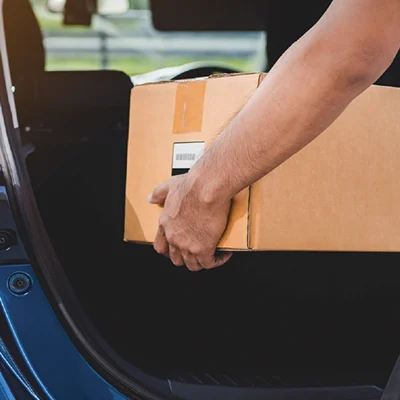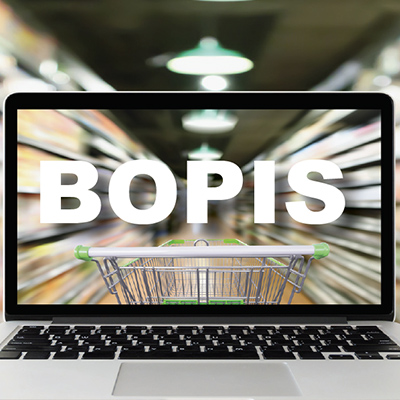
Shipping used to be a linear exercise. A manufacturer shipped products to a distribution center. From there, the products were delivered to stores who handed them to customers.
But this linearity is a thing of the past. So is the shipper’s control of the supply chain. E-commerce has spawned the omni-channel fulfillment model where orders, distribution and deliveries occur from anywhere at any time. The traditional supply-push scenario with shippers calling the shots is giving way to a demand-pull approach with consumers driving the transaction.
The BOPIS (meaning “Buy Online, Pick Up In Store”) concept has become a key part of the asymmetrical, demand-pull world we now live in. Consumers order an item on an electronic device, compelling a retailer to immediately pick and pack the product at one of multiple locations and have it ready for the consumer’s arrival within hours.
Customer Experience Depends on BOPIS Shipping Excellence
While the COVID-19 pandemic accelerated the adoption of BOPIS retail operations, they are now a fixture of omni-channel fulfillment. To execute an effective BOPIS shipping strategy, suppliers must understand retailers’ two overarching objectives:
- Ensure a seamless customer experience regardless of the order touchpoint
- Maintain adequate in-store inventory while expanding digital buying opportunities
As SupplyChainBrain puts it: “A BOPIS strategy fortifies a shipper’s brand equity by consistently satisfying the retailer’s replenishment needs.”
It is essential for retailers to have the right goods always available, at the right place at the right time for the consumer. The “right time” could involve shipping to a residence or to another physical location. It could mean an in-person brick-and-mortar sale. It could mean BOPIS. Or, it could be a drop-ship model where the supplier delivers directly to the customer on behalf of the retailer, thus minimizing the need to hold inventory in a space-constrained facility like a store or warehouse.
Striking the correct balance between in-store and digital inventory is just as critical. In-store customers are typically more loyal and buy more per visit than online customers. Retailers are loath to broaden their digital channels if it threatens to siphon off in-store activity. On the other hand, BOPIS retail offers a way to get online shoppers into the store where they might increase the value of their purchase by buying accessories or additional merchandise.
Maximizing the value of both scenarios requires visibility and analytics tools. Per TotalRetail magazine, to address the challenge of balancing inventory and gaining visibility for effective and efficient BOPIS retail pickup programs, retailers are increasingly turning to automated technology solutions.
A clear line of sight across the ecosystem allows shippers to align production with retailers’ systems and replenishment needs. Analytics like Machine Learning and Artificial Intelligence also provide shippers with vital clues about consumers’ future buying habits so they and their retailer partners can stay a step ahead.
Seasoned third-party logistics specialists can empower shippers to take full advantage of these information systems to manage a consistently successful BOPIS shipping program that leverages cost-effective automation. They work extensively with all stakeholders, and can quickly adjust the go-to-market processes to optimize outcomes and avoid costly missteps.
Final Delivery Drives Loyalty or Brand Damage

Online fulfillment is a fast-paced, often unforgiving business. You are only as good as your last delivery. If a customer’s purchase isn’t ready for the promised, rapid in-store fulfillment, the BOPIS retail strategy could have a negative result.
The margin for error narrows further in a BOPIS retail transaction. If a customer makes a trip to the store only to discover a stock-out, it can seriously damage both brands, especially if a negative review spreads on social media.
The good news for shippers is that providing the convenience that gives BOPIS meaning should result in enduring brand loyalty from consumer and retailer alike. Consumers prize convenience, and will favor retailers who make the BOPIS retail experience as easy as “pulling up and popping the trunk.” This goodwill extends to the products they pick up and take home.
What customers know, and will remember, is how, when and where they received their product. Or why they didn’t. That is how your brand will be remembered. Shippers who understand BOPIS shipping to consistently help retailers execute will become sticky to the retailer. In today’s world, logistics—more than any part of a shipper’s business—is becoming the competitive differentiator.
Navigate the New “Never Normal”
Planned properly, the BOPIS retail fulfillment model is a valuable tool in the highly competitive e-commerce space.
The devil is in the execution. Transportation Insight specializes in designing and executing supply chain strategies that empower you to provide the final mile delivery options required to wow end-customers.
Contact us today to discuss strategies that we can help you leverage to enhance customer service, grow market share and increase competitive advantage.










